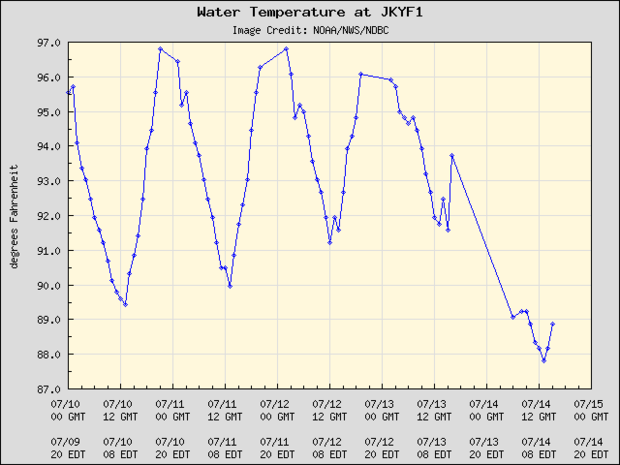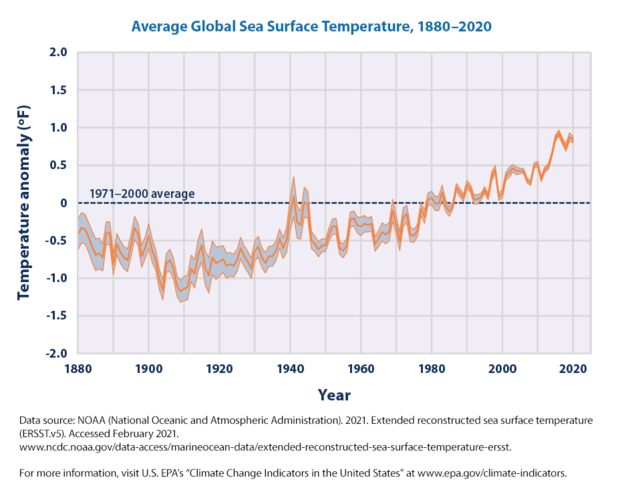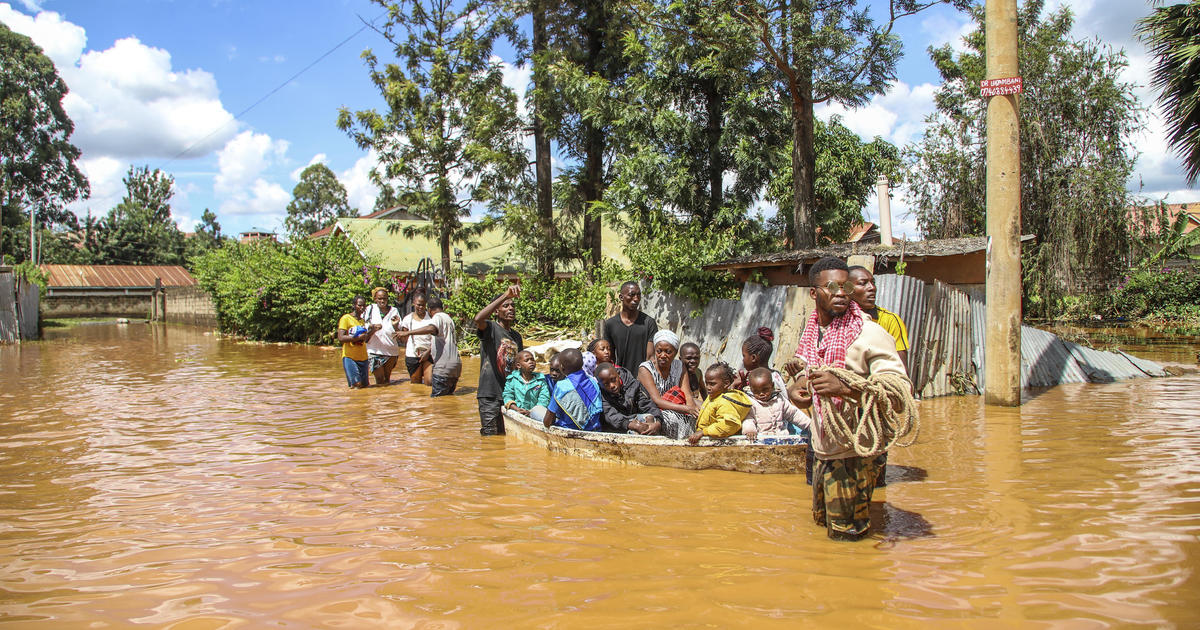Florida ocean temperatures peak to almost 100 degrees amid heatwave: "You really can't cool off"
Floridians usually flock to the ocean to escape the summer heat. But this week, it may not have been much help as sea surface temperatures soared to the mid-90s, even encroaching 100 degrees Fahrenheit at some points.
Some of the highest temperatures seemed to be around South Florida, with a NOAA buoy off the tip of the state recording a water temperature of nearly 97 degrees Fahrenheit on Tuesday and Wednesday. On Thursday, the temperature in that area dropped down to just under 94 degrees, before dropping even further to about 88 degrees as of Friday morning.
Those warm waters were even farther north around Tampa Bay, buoy data shows. Old Port Tampa recorded temperatures surpassing 94 degrees Fahrenheit on Thursday, while a buoy in nearby Clearwater Beach recorded temperatures as high as 91 degrees the same day. The Atlantic Coast is seeing temperatures in the mid to high 80s.
The Weather Channel's Stephanie Abrams told "CBS Mornings" on Friday that June marked the third consecutive month of record ocean waters.
"Not only are we seeing the warmth in the Pacific with the building of El Niño, but also over the North Atlantic," she said. "...The water temperatures near Miami are in the mid-90s."
Meteorologists told CBS Miami that the temperatures seen in Florida's coastal waters are "incredible."
"The water is so warm you really can't cool off," National Weather Service meteorologist Andrew Orrison told CBS Miami, saying the temperatures seen in the Gulf and Southwest Atlantic are 4 to 5 degrees warmer than normal.
Average temperatures in the Gulf Coast typically remain in the mid-80s in July on average, according to NOAA's National Centers for Environmental Information.
"That's making things tougher or more oppressive for people who are going to be out and about," Orrison said, as the warm water also makes the air more humid. All of South Florida is at risk of excessive heat in the coming week, with the heat index expected to be as high as 110 degrees Fahrenheit on Friday, according to the National Weather Service.
The conditions come as a marine heat wave continues to encapsulate the world's oceans. In May and June, global sea temperatures hit record-highs, hitting temperatures "much higher than anything the models predicted," researchers said. El Niño is partially to blame, although the overall increase in global temperatures is a major component.
Sea surface temperatures have been rising for decades, with the past three decades seeing "consistently higher" temperatures "than any other time since reliable observations began in 1880," according to the EPA.
The warming the world's oceans have experienced since 1991, in particular, is so extreme, that it has doubled the size of the marine heat wave that's been forecasted for September. At that time, it's expected that as much as half of the ocean could be experiencing a heat wave.
Sea surface temperatures are a vital indicator of the health of the world's oceans and the planet at large. And if it becomes too warm, the impacts could be devastating. As the sea surface temperature changes, it can affect the species that are able to live in certain locations, thus altering migration and breeding patterns, the EPA says.
It can also cause coral bleaching, which Florida is currently at risk of experiencing.
Mark Eakin, a retired NOAA coral reef scientist who is now at the International Coral Reef Society, told CBS Miami that the heat could bring a "nasty bleaching" event to Florida's reefs. And Liv Williamson, who studies reefs at the University of Miami's Coral Reef Futures Lab, said that her team has already started hearing of bleaching events from Belize, "which is very alarming this early in the summer."
There's a 90% chance there will be major bleaching in Florida, the Caribbean coast of Central America, and other areas, she said.
"This is only July," she said. "This heat will just keep accumulating and these corals will be forced to deal with dangerously warm conditions for much longer than is normal."
Higher sea surface temperatures could also increase the risk of the development of the toxic bloom known as red tide, which Florida has notoriously struggled with for years as these events are toxic to marine life.
Impacts even go beyond the sunshine state, impacting the global climate at large, the EPA says. As sea surface temperatures warm, it adds water vapor to the atmosphere over the oceans, feeding into weather systems and increasing the risk of heavier precipitation events.






